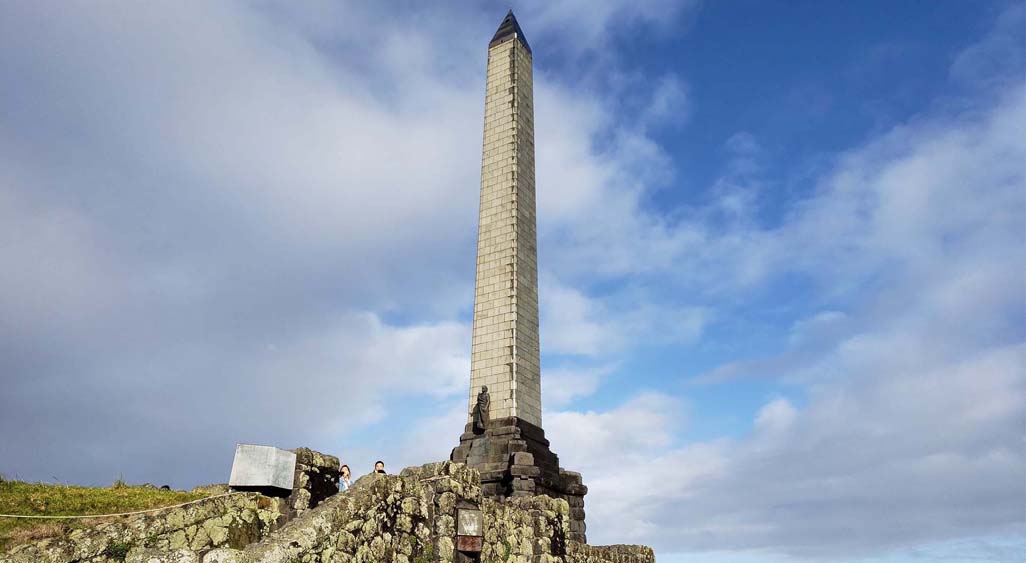 The volcanic peak in Auckland known as both the Maungakiekie and One Tree Hill has influenced the culture and people of Auckland, New Zealand in an incredible manner. Long before the area was known by either name, the Māori people built structures around the hill as an eternal monument to their skill and energy. Today, the site hosts a much more literal monument that honors the culture of the past and present to help define the future of the area and community.
The volcanic peak in Auckland known as both the Maungakiekie and One Tree Hill has influenced the culture and people of Auckland, New Zealand in an incredible manner. Long before the area was known by either name, the Māori people built structures around the hill as an eternal monument to their skill and energy. Today, the site hosts a much more literal monument that honors the culture of the past and present to help define the future of the area and community.

“Mountain of the Kiekie Vine”
The mountain and its surroundings were home to the Te Wai ō Hua tribe for many centuries. Other Māori tribes in the Auckland area can also trace their ancestry to the mountain. The Māori name Maungakiekie means “mountain of the kiekie vine“. Māori also knew it as “tōtara that stands alone”.
After a series of conflicts, the hill was abandoned by the controlling tribes after a 1740 battle. In 1845, a block of land which included Maungakiekie / One Tree Hill was sold to Thomas Henry. The Government, under its preemptive rights, excluded 115 acres of the hill itself from the sale, which is now One Tree Hill Domain.
 In 1853, Henry’s land was purchased and would later become Cornwall Park in 1901. Sir John Logan Campbell gave what would become Cornwall Park to a private trust he had established to hold the land for the use of the public. The space is now co-governed by the collective and Auckland Council in common benefit of and for “all other people of Auckland”.
In 1853, Henry’s land was purchased and would later become Cornwall Park in 1901. Sir John Logan Campbell gave what would become Cornwall Park to a private trust he had established to hold the land for the use of the public. The space is now co-governed by the collective and Auckland Council in common benefit of and for “all other people of Auckland”.
When Auckland was founded as a colonial town a tree stood near the summit which gave the hill its English name. That tree was cut down in 1852, but another tree and well as ones planed by Campbell were planted in the area to replace it, although many of those trees were cut down in the 1960s. In 1994, Māori activists attacked the remaining trees with chainsaws to draw attention to injustices the New Zealand government had inflicted upon Māori. Since then, new efforts have been to see trees return to One Tree Hill.
Today, One Tree Hill & Cornwall Park work together as neighboring parks, together serving as the largest parkland in Auckland to enable an incredible impact on the city as a whole.

Views Across the Auckland Area
Always accessible by foot, Maungakiekie / One Tree Hill has come to serve as one of the main attractions in Auckland and provides incredible views across the Auckland area. This view provides both residents and tourists with an unbelievable perspective of the contemporary city as well as the 28,500 years of history contained within the surrounding area. That’s just part of what makes the trek up and onto the summit so monumentous though.
 On the summit of the hill is an obelisk, which was created to be a memorial to Māori. It also contains the grave of John Logan Campbell, which is located in the middle of the flat platform which serves as the forecourt to the monument. While the obelisk was originally intended to be a memorial to the Māori people, the obelisk has since been suggested to become a centennial tower to mark the centennial year of the signing of the Treaty of Waitangi. The legacy of the space and obelisk is ever-evolving.
On the summit of the hill is an obelisk, which was created to be a memorial to Māori. It also contains the grave of John Logan Campbell, which is located in the middle of the flat platform which serves as the forecourt to the monument. While the obelisk was originally intended to be a memorial to the Māori people, the obelisk has since been suggested to become a centennial tower to mark the centennial year of the signing of the Treaty of Waitangi. The legacy of the space and obelisk is ever-evolving.
That evolution speaks to the sense of community that Maungakiekie /One Tree Hill has enabled for Auckland as a whole. Locals use the path that is just beyond the gate leading into One Tree Hill to get to the top. It is steep and can be slippery in spots, especially if it has recently rained. The recommended path to the top is along the road, where crowds from across the nation and world come together to walk up to the summit.
The views and history that is accessible from the top of the extinct, intact, volcanic cone are truly monumentous, but they are only part of the legacy that the site has come to represent of Auckland and New Zealand as a whole.

An Ever-Evolving Legacy
 Sir John Logan Campbell bequeathed £5,000 for the obelisk mostly because he expected that the Māori would gradually die out and that an impressive memorial would be a most fitting symbol to perpetuate their memory. As that has proven to not be the case, the monument itself has come to be interpreted in many different ways, just like other notable monuments in New Zealand and across the world.
Sir John Logan Campbell bequeathed £5,000 for the obelisk mostly because he expected that the Māori would gradually die out and that an impressive memorial would be a most fitting symbol to perpetuate their memory. As that has proven to not be the case, the monument itself has come to be interpreted in many different ways, just like other notable monuments in New Zealand and across the world.
The ever-evolving legacy of the site and monument will ensure that it has an important place in the present and future of the culture and economy of Auckland.


